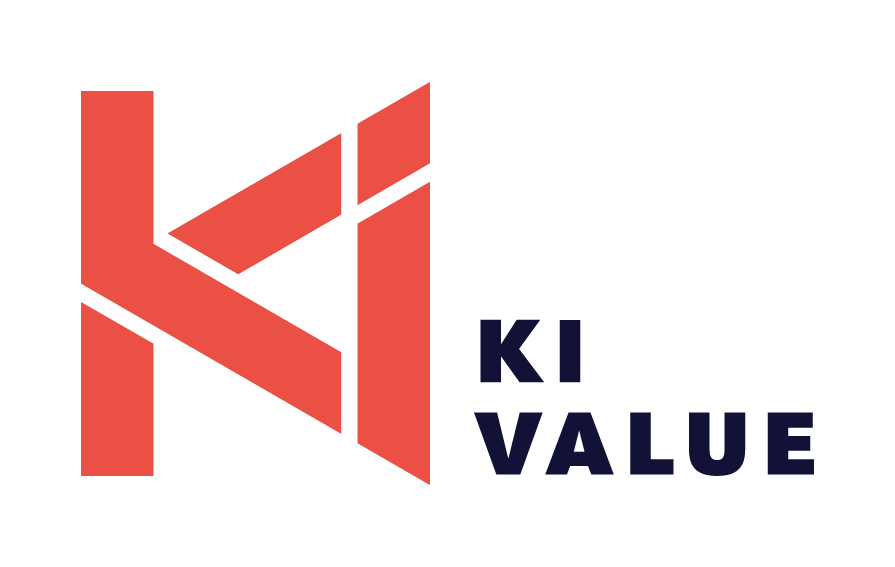To make KIVALUE work and improve your user experience, we log user data and employ essential cookies. By using KIVALUE website, you agree to our Privacy Policy, including cookie policy.
OK
New Partnership with Pricen in Italy: Read Here
Decoding the Psychology of Pricing // Strategies for Electronics in the Omni-Channel Era
Introduction
Electronics retail plays a decisive role in influencing consumer behaviour when it comes to pricing strategies. Understanding the psychological aspects of pricing is essential for not only maximising revenue but also for creating a positive shopping experience.
In this exploration, we delve into the intricacies of psychological pricing for electronics, emphasising the significance of omni-channel strategies, assortment planning and merchandise financial planning.
Electronics retail plays a decisive role in influencing consumer behaviour when it comes to pricing strategies. Understanding the psychological aspects of pricing is essential for not only maximising revenue but also for creating a positive shopping experience.
In this exploration, we delve into the intricacies of psychological pricing for electronics, emphasising the significance of omni-channel strategies, assortment planning and merchandise financial planning.
Foundations of Psychological Pricing
Psychological pricing leverages human emotions and perceptions to influence purchasing decisions.
In the realm of electronics, where innovation is rapid and consumer preferences are diverse, adopting the right psychological pricing strategy is crucial.
Psychological pricing leverages human emotions and perceptions to influence purchasing decisions.
In the realm of electronics, where innovation is rapid and consumer preferences are diverse, adopting the right psychological pricing strategy is crucial.
Key Components of an Effective Pricing Strategy
Omni-Channel Shopper Experience
Definition: Omni-channel strategies provide a seamless shopping experience across various channels, including physical stores, websites and mobile apps.
Application: Ensure consistency in pricing across all channels. Consumers should encounter the same prices regardless of where they engage, fostering trust and transparency.
Assortment Planning
Definition: Assortment planning involves curating a selection of products that align with consumer preferences and market trends.
Application: Tailor pricing strategies to different product categories. High-demand items might benefit from a premium price, while competitive pricing may be essential for market entry products.
Merchandise Financial Planning
Definition: Merchandise financial planning involves analysing the financial performance of products to make informed decisions about pricing and inventory.
Application: Align pricing with financial goals. Consider profit margins, market positioning, and the overall financial health of the business when determining price points.
Markdown Pricing
Definition: Markdown pricing involves reducing the original price of a product to stimulate sales and clear inventory.
Application: Implement strategic markdowns for electronics with short product life cycles. This prevents obsolescence and ensures a steady influx of new, innovative products.
Demand Forecasting
Definition: Demand forecasting uses data and analytics to predict future consumer demand for specific products.
Application: Adjust pricing based on demand forecasts. High demand might support premium pricing, while lower demand may require discounts to stimulate sales.
Replenishment Plan
Definition: A replenishment plan outlines how inventory is restocked to meet consumer demand.
Application: Coordinate pricing with replenishment plans. Products in high demand may warrant higher prices, while those in abundance may benefit from promotions.
Omni-Channel Shopper Experience
Definition: Omni-channel strategies provide a seamless shopping experience across various channels, including physical stores, websites and mobile apps.
Application: Ensure consistency in pricing across all channels. Consumers should encounter the same prices regardless of where they engage, fostering trust and transparency.
Assortment Planning
Definition: Assortment planning involves curating a selection of products that align with consumer preferences and market trends.
Application: Tailor pricing strategies to different product categories. High-demand items might benefit from a premium price, while competitive pricing may be essential for market entry products.
Merchandise Financial Planning
Definition: Merchandise financial planning involves analysing the financial performance of products to make informed decisions about pricing and inventory.
Application: Align pricing with financial goals. Consider profit margins, market positioning, and the overall financial health of the business when determining price points.
Markdown Pricing
Definition: Markdown pricing involves reducing the original price of a product to stimulate sales and clear inventory.
Application: Implement strategic markdowns for electronics with short product life cycles. This prevents obsolescence and ensures a steady influx of new, innovative products.
Demand Forecasting
Definition: Demand forecasting uses data and analytics to predict future consumer demand for specific products.
Application: Adjust pricing based on demand forecasts. High demand might support premium pricing, while lower demand may require discounts to stimulate sales.
Replenishment Plan
Definition: A replenishment plan outlines how inventory is restocked to meet consumer demand.
Application: Coordinate pricing with replenishment plans. Products in high demand may warrant higher prices, while those in abundance may benefit from promotions.
Omni-Channel Shopper Experience and Pricing Consistency
In the era of omni-channel retail, consumers seamlessly transition between online and offline channels.
Pricing consistency is paramount to building trust.
If a customer sees a product online but finds a different price in-store, it can lead to frustration and erode trust in the brand.
In the era of omni-channel retail, consumers seamlessly transition between online and offline channels.
Pricing consistency is paramount to building trust.
If a customer sees a product online but finds a different price in-store, it can lead to frustration and erode trust in the brand.

Assortment Planning: Tailoring Prices to Categories
Electronics encompass a wide range of products, each with distinct features and target audiences.
Tailoring pricing strategies to different categories is essential.
Premium electronics, for instance, can withstand higher price points, while budget-friendly gadgets may require competitive pricing to attract cost-conscious consumers.
Electronics encompass a wide range of products, each with distinct features and target audiences.
Tailoring pricing strategies to different categories is essential.
Premium electronics, for instance, can withstand higher price points, while budget-friendly gadgets may require competitive pricing to attract cost-conscious consumers.
Merchandise Financial Planning: Balancing Profitability and Affordability
Effective merchandise financial planning involves striking a balance between profitability and affordability.
While premium products contribute to higher profit margins, maintaining a range of price points ensures accessibility to a broader consumer base.
Effective merchandise financial planning involves striking a balance between profitability and affordability.
While premium products contribute to higher profit margins, maintaining a range of price points ensures accessibility to a broader consumer base.
Markdown Pricing: Strategic Reductions for Obsolescence
Electronics face rapid obsolescence due to technological advancements.
Strategic markdown pricing is instrumental in clearing out outdated inventory, preventing losses, and making room for the latest innovations.
Electronics face rapid obsolescence due to technological advancements.
Strategic markdown pricing is instrumental in clearing out outdated inventory, preventing losses, and making room for the latest innovations.
Demand Forecasting: Pricing Agility Based on Anticipated Demand
Demand forecasting provides insights into consumer preferences.
By aligning pricing with anticipated demand, retailers can maximise profits during peak periods and stimulate sales during slow seasons.
Demand forecasting provides insights into consumer preferences.
By aligning pricing with anticipated demand, retailers can maximise profits during peak periods and stimulate sales during slow seasons.
Replenishment Plan: Pricing Synchronicity with Inventory Levels
Coordinating pricing with replenishment plans ensures that products are appropriately priced based on their availability.
Scarce items may warrant premium pricing, while overstocked items benefit from promotional pricing.
Coordinating pricing with replenishment plans ensures that products are appropriately priced based on their availability.
Scarce items may warrant premium pricing, while overstocked items benefit from promotional pricing.
Conclusion
In the realm of electronics, where innovation and consumer expectations intersect, mastering the psychology of pricing is an art.
Through a seamless omni-channel shopper experience, meticulous assortment planning, and strategic use of merchandise financial planning, retailers can navigate the intricate landscape of psychological pricing.
By staying attuned to market demands, adjusting prices based on effective demand forecasting, and synchronising pricing with replenishment plans, electronics retailers can create an optimal pricing strategy that resonates with consumers, fosters loyalty, and drives sustainable profitability.
The incorporation of these strategies, augmented by the insights of fashion retail consulting, positions electronics retailers to thrive in an ever-evolving market.
In the realm of electronics, where innovation and consumer expectations intersect, mastering the psychology of pricing is an art.
Through a seamless omni-channel shopper experience, meticulous assortment planning, and strategic use of merchandise financial planning, retailers can navigate the intricate landscape of psychological pricing.
By staying attuned to market demands, adjusting prices based on effective demand forecasting, and synchronising pricing with replenishment plans, electronics retailers can create an optimal pricing strategy that resonates with consumers, fosters loyalty, and drives sustainable profitability.
The incorporation of these strategies, augmented by the insights of fashion retail consulting, positions electronics retailers to thrive in an ever-evolving market.
At KIVALUE we cover end-to-end
fashion retail processes
fashion retail processes
From connecting merchandising, buying, and planning processes to omnichannel inventory and markdown management
We offer FREE assessment of your current solution requirements.
We offer FREE assessment of your current solution requirements.
ABOUT YOU Success Story to your Inbox
Just pop-in your name and email.
We value your information and won't share it with anyone.
We value your information and won't share it with anyone.
By clicking you agree to our Privacy Policy
let's talk!
Just pop-in your name and email.
We value your information and won't share it with anyone.
We value your information and won't share it with anyone.
By clicking you agree to our Privacy Policy
before we contact you
By clicking you agree to our Privacy Policy


